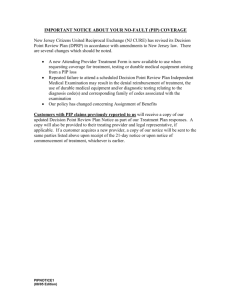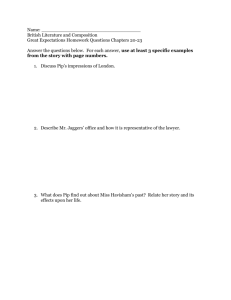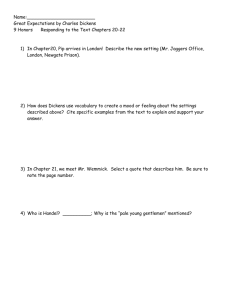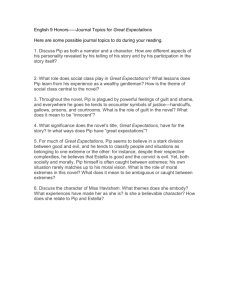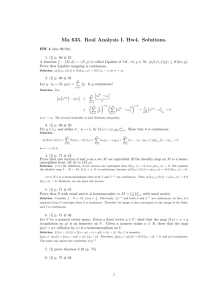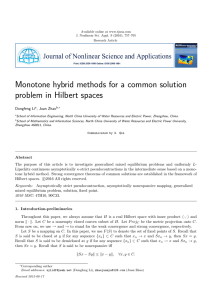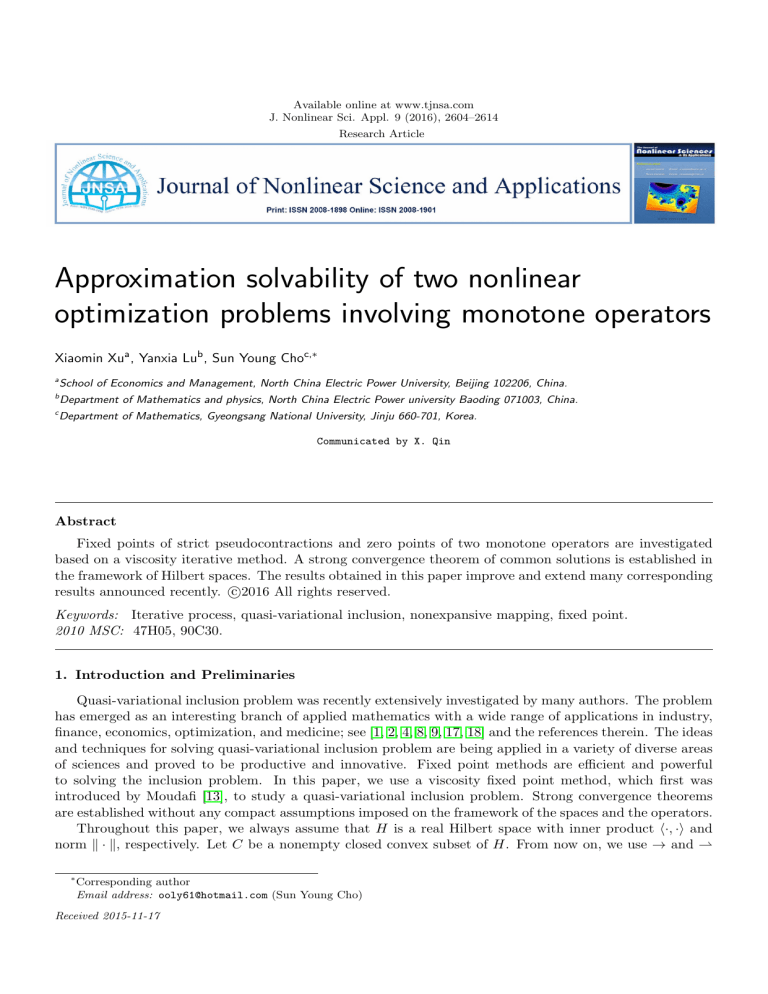
Available online at www.tjnsa.com
J. Nonlinear Sci. Appl. 9 (2016), 2604–2614
Research Article
Approximation solvability of two nonlinear
optimization problems involving monotone operators
Xiaomin Xua , Yanxia Lub , Sun Young Choc,∗
a
School of Economics and Management, North China Electric Power University, Beijing 102206, China.
b
Department of Mathematics and physics, North China Electric Power university Baoding 071003, China.
c
Department of Mathematics, Gyeongsang National University, Jinju 660-701, Korea.
Communicated by X. Qin
Abstract
Fixed points of strict pseudocontractions and zero points of two monotone operators are investigated
based on a viscosity iterative method. A strong convergence theorem of common solutions is established in
the framework of Hilbert spaces. The results obtained in this paper improve and extend many corresponding
results announced recently. c 2016 All rights reserved.
Keywords: Iterative process, quasi-variational inclusion, nonexpansive mapping, fixed point.
2010 MSC: 47H05, 90C30.
1. Introduction and Preliminaries
Quasi-variational inclusion problem was recently extensively investigated by many authors. The problem
has emerged as an interesting branch of applied mathematics with a wide range of applications in industry,
finance, economics, optimization, and medicine; see [1, 2, 4, 8, 9, 17, 18] and the references therein. The ideas
and techniques for solving quasi-variational inclusion problem are being applied in a variety of diverse areas
of sciences and proved to be productive and innovative. Fixed point methods are efficient and powerful
to solving the inclusion problem. In this paper, we use a viscosity fixed point method, which first was
introduced by Moudafi [13], to study a quasi-variational inclusion problem. Strong convergence theorems
are established without any compact assumptions imposed on the framework of the spaces and the operators.
Throughout this paper, we always assume that H is a real Hilbert space with inner product h·, ·i and
norm k · k, respectively. Let C be a nonempty closed convex subset of H. From now on, we use → and *
∗
Corresponding author
Email address: ooly61@hotmail.com (Sun Young Cho)
Received 2015-11-17
X. Xu, Y. Lu, S. Y. Cho, J. Nonlinear Sci. Appl. 9 (2016), 2604–2614
2605
to denote the strong convergence and weak convergence, respectively. Recall that a space is said to satisfy
Opial’s condition [14] if, for any sequence {xn } ⊂ H with xn * x, the inequality
lim inf kxn − xk < lim inf kxn − yk,
n→∞
n→∞
holds for every y ∈ H with y 6= x. Indeed, the above inequality is equivalent to the following
lim sup kxn − xk < lim sup kxn − yk.
n→∞
n→∞
Let S be a mapping. We use F (S) to stand for the fixed point set of S; that is, F (S) := {x ∈ C : x = Sx}.
Recall that S is said to be α-contractive iff there exists a constant α ∈ (0, 1) such that
kSx − Syk ≤ αkx − yk,
∀x, y ∈ C.
S is said to be nonexpansive iff
kSx − Syk ≤ kx − yk,
∀x, y ∈ C.
It is known that the fixed point set of the mapping is not empty if the subset C is bounded in the
framework of Hilbert spaces.
S is said to be κ-strictly pseudocontractive iff there exists a constant κ ∈ [0, 1) such that
∀x, y ∈ C,
kSx − Syk2 ≤ kx − yk2 + κk(x − Sx) − (y − Sy)k2 .
The class of κ-strictly pseudocontractive mappings was introduced by Browder and Petryshyn [5]. Note
that the class of κ-strictly pseudocontractive mappings strictly includes the class of nonexpansive mappings.
That is, S is nonexpansive iff κ = 0. The class of κ-strict pseudocontractions has been extensively investigated based on viscosity iterative methods since it has a close relation with monotone operators; see [5] and
the references therein.
A multivalued operator B : H → 2H with the domain Dom(B) = {x ∈ H : Bx 6= ∅} and the range
Ran(B) = {Bx : x ∈ Dom(B)} is said to be monotone if for x1 ∈ Dom(B), x2 ∈ Dom(B), y1 ∈ Bx1
and y2 ∈ Bx2 , we have hx1 − x2 , y1 − y2 i ≥ 0. A monotone operator B is said to be maximal if its graph
Graph(B) = {(x, y) : y ∈ Bx} is not properly contained in the graph of any other monotone operator. Let
I denote the identity operator on H and B : H → 2H be a maximal monotone operator. Then we can
define, for each λ > 0, a nonexpansive single valued mapping (I + λB)−1 . It is called the resolvent of B. We
know that B −1 0 = F ((I + λB)−1 ) for all λ > 0. We also know that (I + λB)−1 is firmly nonexpansive; see
[7, 10, 15] and the references therein.
Let A : C → H be a single-valued mapping. Recall that A is said to be monotone iff
∀x, y ∈ C,
hAx − Ay, x − yi ≥ 0.
A is said to be ξ-strongly monotone iff there exists a constant ξ > 0 such that
∀x, y ∈ C,
hAx − Ay, x − yi ≥ ξkx − yk2 .
A is said to be ξ-inverse-strongly monotone iff there exists a constant ξ > 0 such that
∀x, y ∈ C,
hAx − Ay, x − yi ≥ ξkAx − Ayk2 .
It is not hard to see that ξ-inverse-strongly monotone mappings are Lipschitz continuous. It is also
obvious that every operator is ξ-inverse-strongly monotone iff its inverse is ξ-strongly monotone.
Recall that the classical variational inequality, denoted by V I(C, A), is to find u ∈ C such that
hAu, v − ui ≥ 0, ∀v ∈ C. It is known that the variational inequality is equivalent to a fixed point problem. This equivalence plays an important role in the studies of the variational inequalities and related
optimization problems.
X. Xu, Y. Lu, S. Y. Cho, J. Nonlinear Sci. Appl. 9 (2016), 2604–2614
2606
In this paper, we are concerned with the problem of finding a common element in the intersection:
F (S)∩(A+B)−1 (0), where F (S) denotes the fixed point set of κ-strict pseudocontraction S and (A+B)−1 (0)
denotes the zero point set of the sum of the operator A and the operator B. The results obtain in this paper
mainly improve the corresponding results in [3, 6, 7, 11, 16, 19],[21]-[26].
Lemma 1.1 ([20]). Suppose that H is a real Hilbert space and 0 < p ≤ tn ≤ q < 1 for all n ≥ 1. Suppose
further that {xn } and {yn } are sequences of H such that
lim sup kxn k ≤ r,
n→∞
lim sup kyn k ≤ r
n→∞
and
lim ktn xn + (1 − tn )yn k = r
n→∞
hold for some r ≥ 0. Then limn→∞ kxn − yn k = 0.
Lemma 1.2 ([3]). Let C be a nonempty, closed, and convex subset of H, A : C → H a mapping, and
B : H ⇒ H a maximal monotone operator. Then F ((I + λB)−1 (I − λA)) = (A + B)−1 (0).
Lemma 1.3 ([12]). Assume that {αn } is a sequence of nonnegative real numbers such that
αn+1 ≤ (1 − γn )αn + δn ,
where {γn } is a sequence in (0,1) and {δn } is a sequence such that
P∞
(i)
n=1 γn = ∞;
P
(ii) lim supn→∞ δn /γn ≤ 0 or ∞
n=1 |δn | < ∞.
Then limn→∞ αn = 0.
Lemma 1.4 ([5]). Let C be a nonempty, closed, and convex subset of H. Let S : C → C be a strictly
psedocontractive mapping. Then S is Lipschitz continuous and I − S is demiclosed at zero.
2. Main results
Theorem 2.1. Let H be a real Hilbert space and let C be a nonempty closed convex subset of H. Let
A : C → H be a ξ-inverse-strongly monotone mapping and let B be a maximal monotone operator on
H such that Dom(B) ⊂ C. Let f be a fixed α-contractive mapping on C and let S be κ-quasi-strict
pseudocontraction on C. Let {λn } be a positive real number sequence. Let {αn,1 }, {αn,2 }, {αn,3 }, {βn } and
{γn } be real number sequences in (0, 1). Let {xn } be a sequence in C generated in the following iterative
process
x1 ∈ C,
yn = αn,1 zn + αn,2 f (xn ) + αn,3 xn ,
xn+1 = (1 − βn )((1 − γn )Syn + γn yn ) + βn xn , ∀n ≥ 1,
where zn ≈ (I+λn B)−1 (xn −λn Axn ), the criterion for the approximate computation is kzn −(I+λn B)−1 (xn −
λn Axn )k ≤ en . Assume that the sequences {αn,1 }, {αn,2 }, {αn,3 }, {βn }, {γn } and {λn } satisfy the following
restrictions: αn,1 + αn,2 + αn,3 = P
1, 0 < a ≤ βn ≤ b < 1; κ ≤ γn ≤ c < 1, limn→∞ |γn+1 − γn | = 0;
∞
limn→∞ αn2 = limn→∞ αn3 = 0,
n=1 αn,2 = ∞; 0 < d ≤ λn ≤ e < 2ξ, limn→∞ |λn+1 − λn | = 0,
limn→∞ ken k = 0, where a, b, c, d and e are some real numbers. If F = F ix(S) ∩ (A + B)−1 (0) 6= ∅, then
sequence {xn } converges strongly to x̄, where x̄ solves the following variational inequality hf (x̄)−x̄, x̄−xi ≥ 0,
∀x ∈ F.
X. Xu, Y. Lu, S. Y. Cho, J. Nonlinear Sci. Appl. 9 (2016), 2604–2614
2607
Proof. First, we show that {xn } is bounded. Since A is inverse-strongly monotone, we have
k(I − λn A)y − (I − λn A)xk2
= λn 2 kAx − Ayk2 + kx − yk2 − 2λn hx − y, Ax − Ayi
≤ λn (λn − 2ξ)kAx − Ayk2 + kx − yk2 .
Using the restriction imposed on {λn }, one has kx − yk ≥ k(I − λn A)x − (I − λn A)yk. That is, I − λn A
is nonexpansive. Fixing p ∈ F, we find from Lemma 1.2 that
p = (I + λn B)−1 (p − λn Ap).
Since both (I + λn B)−1 and I − λn A are nonexpansive, we have kzn − pk ≤ ken k + kxn − pk. It follows that
kyn − pk ≤ αn,1 kzn − pk + αn,2 kf (xn ) − pk + αn,3 kxn − pk
≤ αn,1 ken k + αn,1 kxn − pk + αn,2 αkxn − pk + αn,2 kf (p) − pk + αn,3 kxn − pk
(2.1)
≤ (1 − αn,2 (1 − α))kxn − pk + αn,2 kf (p) − pk + ken k.
Since S is κ-quasi-strictly pseudocontractive on C, one finds from (2.1) that
kγn yn + (1 − γn )Syn − pk2
= (1 − γn )kSyn − Spk2 + γn kyn − pk2 − γn (1 − γn )k(yn − p) − (Syn − Sp)k2
≤ γn kyn − pk2 + (1 − γn )(kyn − pk2 + κk(yn − p) − (Syn − Sp)k2 )
− γn (1 − γn )k(yn − p) − (Syn − Sp)k2
(2.2)
= kyn − pk2 − (1 − γn )(γn − κ)k(yn − p) − (Syn − Sp)k2
≤ kyn − pk2 .
Using (2.1) and (2.2), we find
kγn yn + (1 − γn )Syn − pk ≤ (1 − αn,2 (1 − α))kxn − pk + αn,2 kf (p) − pk + ken k.
It follows that
kxn+1 − pk ≤ (1 − βn )kγn yn + (1 − γn )Syn − pk + βn kxn − pk
≤ αn,2 (1 − βn )kf (p) − pk + (1 − βn ) 1 − αn,2 (1 − α) kxn − pk
+ (1 − βn )en + βn kxn − pk
≤ αn,2 (1 − βn )kf (p) − pk + 1 − αn,2 (1 − α)(1 − βn ) kxn − pk + en
kf (p) − pk
, kxn − pk} + en
≤ max{
1−α
≤ ···
∞
X
kf (p) − pk
≤ max{
, kx1 − pk} +
ei < ∞.
1−α
i=1
This proves that {xn } is bounded. Since f is an α-contractive, we find
kyn+1 − yn k ≤ αn+1,1 kzn+1 − zn k + αn+1,2 kf (xn+1 ) − f (xn )k + αn+1,3 kxn+1 − xn k
+ |αn+1,1 − αn,1 |kzn k + |αn+1,2 − αn,2 |kf (xn )k + |αn+1,3 − αn,3 |kxn k
≤ αn+1,1 kzn+1 − zn k + αn+1,2 αkxn+1 − xn k + αn+1,3 kxn+1 − xn k
+ |αn+1,1 − αn,1 |kzn k + |αn+1,2 − αn,2 |kf (xn )k + |αn+1,3 − αn,3 |kxn k.
(2.3)
X. Xu, Y. Lu, S. Y. Cho, J. Nonlinear Sci. Appl. 9 (2016), 2604–2614
2608
Putting Jλn = (I + λn B)−1 , one has
kzn+1 − zn k ≤ ken+1 k + kJλn+1 (xn+1 − λn+1 Axn+1 − Jλn (xn − λn Axn k + ken k
≤ k(xn − λn Axn ) − (xn+1 − λn+1 Axn+1 )k
+ kJλn (xn − λn Axn ) − Jλn+1 (xn − λn Axn )k + ken+1 k + ken k
(2.4)
≤ |λn+1 − λn |kAxn k + kxn+1 − xn k
+ kJλn (xn − λn Axn ) − Jλn+1 (xn − λn Axn )k + ken+1 k + ken k.
Substituting (2.4) into (2.3), we find
kyn+1 − yn k ≤ |λn+1 − λn |kAxn k + 1 − αn+1,2 (1 − α) kxn+1 − xn k
+ αn+1,1 kJλn (xn − λn Axn ) − Jλn+1 (xn − λn Axn )k + ken+1 k + ken k
(2.5)
+ |αn+1,1 − αn,1 |kzn k + |αn+1,2 − αn,2 |kf (xn )k + |αn+1,3 − αn,3 |kxn k.
Putting un = xn − λn Axn , we see that
0 ≥ hJλn+1 un − Jλn un ,
un − Jλn un un − Jλn+1 un
−
i.
λn
λn+1
It follows that
kJλn un − Jλn+1 un k2 ≤ h(1 −
λn+1
)(Jλn un − un ), Jλn un − Jλn+1 un i.
λn
Hence, we have
kJλn un − Jλn+1 un k ≤
|λn+1 − λn |
kJλn un − un k.
λn
(2.6)
From (2.5) and (2.6), one has
kyn+1 − yn k ≤ |λn+1 − λn |kAxn k + 1 − αn+1,2 (1 − α) kxn+1 − xn k
|λn+1 − λn |
kJλn un − un k + ken+1 k + ken k
+
λn
+ |αn+1,1 − αn,1 |kzn k + |αn+1,2 − αn,2 |kf (xn )k + |αn+1,3 − αn,3 |kxn k.
(2.7)
Putting Tn = (1 − γn )S + γn I, one has
kTn x − Tn yk2 ≤ (1 − γn )kSx − Syk2 + γn kx − yk2
− γn (1 − γn )k(Sx − Sy) − (x − y)k2
≤ γn kx − yk2 + (1 − γn )(kx − yk2
+ κk(x − y) − (Sx − Sy)k2 )
− γn (1 − γn )k(x − y) − (Sx − Sy)k2
= kx − yk2 − (1 − γn )(γn − κ)k(x − y) − (Sx − Sy)k2
≤ kx − yk2 ,
∀x, y ∈ C.
It follows that
kTn yn − Tn+1 yn+1 k ≤ kTn+1 yn+1 − Tn+1 yn + Tn+1 yn − Tn yn k
≤ kyn+1 − yn k + k(γn+1 yn + (1 − γn+1 )Syn )
− (γn yn + (1 − γn )Syn )k
≤ kyn+1 − yn k + kγn+1 − γn |(kyn k + kSyn k).
(2.8)
X. Xu, Y. Lu, S. Y. Cho, J. Nonlinear Sci. Appl. 9 (2016), 2604–2614
2609
From (2.7) and (2.8), one has
kTn yn − Tn+1 yn+1 k − kxn+1 − xn k
|λn+1 − λn |
≤ |λn+1 − λn |kAxn k +
kJλn un − un k + ken+1 k + ken k
λn
+ |αn+1,1 − αn,1 |kzn k + |αn+1,2 − αn,2 |kf (xn )k + |αn+1,3 − αn,3 |kxn k
+ kγn+1 − γn |(kyn k + kSyn k).
It follows that
lim sup(kTn+1 yn+1 − Tn yn k − kxn+1 − xn k) ≤ 0.
n→∞
In view of Lemma 1.1, one has limn→∞ kxn − Tn yn k = 0. This finds
lim kxn+1 − xn k = 0.
(2.9)
n→∞
Put µn = Jλn (xn − λn Axn ). Since k · k2 is convex, we see
kxn+1 − pk2 ≤ (1 − βn )kTn yn − pk2 + βn kxn − pk2
≤ βn kxn − pk2 + (1 − βn )kyn − pk2
≤ βn kxn − pk2 + αn,2 kf (xn ) − pk2 + αn,1 (1 − βn )kzn − pk2 + αn,3 (1 − βn )kxn − pk2
≤ βn kxn − pk2 + αn,2 kf (xn ) − pk2 + ken k2 + αn,1 (1 − βn )kµn − pk2 + 2kµn − pkken k
+ αn,3 (1 − βn )kxn − pk2
≤ βn kxn − pk2 + αn,2 kf (xn ) − pk2 + ken k2 + αn,1 (1 − βn )kxn − pk2
− αn,1 (1 − βn )λn (2ξ − λn )kAxn − Apk2 + 2kµn − pkken k + αn,3 (1 − βn )kxn − pk2
≤ 1 − αn,2 (1 − βn ) kxn − pk2 + αn,2 kf (xn ) − pk2 + ken k2
− αn,1 (1 − βn )λn (2ξ − λn )kAxn − Apk2 + 2kµn − pkken k.
It follows that
αn,1 (1 − βn )λn (2ξ − λn )kAxn − Apk2 ≤ αn,2 (1 − βn )kxn − pk2 + αn,2 kf (xn ) − pk2 + ken k2
kxn − pk2 − kxn+1 − pk2 + 2kµn − pkken k.
Using the restrictions imposed on the control sequences, we have
lim kAxn − Apk = 0.
n→∞
Since Jλn is firmly nonexpansive, we have
kµn − pk2 = kJλn (p − λn Ap) − Jλn (xn − λn Axn )k2
≤ hµn − p, (xn − λn Axn ) − (p − λn Ap)i
1
= kµn − pk2 + k(xn − λn Axn ) − (p − λn Ap)k2
2
− k(xn − λn Axn ) − (p − λn Ap) − (µn − p)k2
1
≤ kxn − pk2 + kµn − pk2 − kxn − µn − λn (Axn − Ap)k2
2
1
≤ kxn − pk2 + kµn − pk2 − kxn − µn k2 + 2λn kxn − µn kkAxn − Apk .
2
It follows that
kµn − pk2 ≤ kxn − pk2 − kxn − µn k2 + 2λn kxn − µn kkAxn − Apk.
(2.10)
X. Xu, Y. Lu, S. Y. Cho, J. Nonlinear Sci. Appl. 9 (2016), 2604–2614
2610
Hence, we have
kzn − pk2 ≤ ken k2 + kµ − pk2 + 2ken kkµ − pk
≤ ken k2 + kxn − pk2 − kxn − µn k2 + 2λn kxn − µn kkAxn − Apk + 2ken kkµn − pk.
Since k · k2 is convex, we see that
kxn+1 − pk2 ≤ (1 − βn )kTn yn − pk2 + βn kxn − pk2
≤ (1 − βn )kyn − pk2 + βn kxn − pk2
≤ (1 − βn )αn,1 kzn − pk2 + (1 − βn )αn,2 kf (xn ) − pk2
+ (1 − βn )αn,3 kxn − pk2 + βn kxn − pk2 .
It follows that
kxn+1 − pk2 ≤ ken k2 + (1 − βn )αn,1 kxn − pk2 − (1 − βn )αn,1 kxn − µn k2
+ (1 − βn )αn,1 2λn kxn − µn kkAxn − Apk + 2ken kkµn − pk
+ (1 − βn )αn,2 kf (xn ) − pk2 + (1 − βn )αn,3 kxn − pk2 + βn kxn − pk2
≤ ken k2 − (1 − βn )αn,1 kxn − µn k2 + 2λn kxn − µn kkAxn − Apk + 2ken kkµn − pk
+ αn,2 kf (xn ) − pk2 + 1 − αn,2 (1 − βn ) kxn − pk2 ,
which further implies
(1 − βn )αn,1 kxn − µn k2 ≤ ken k2 + kxn − pk2 − kxn+1 − pk2 + 2λn kxn − µn kkAxn − Apk
+ 2ken kkµn − pk + αn,2 kf (xn ) − pk2 .
This gives from (2.9) and (2.10) that limn→∞ kxn − µn k = 0, which in turn implies that limn→∞ kxn −
zn k = 0. Since αn → 0, we have
lim kxn − yn k = 0.
(2.11)
n→∞
Since P rojF f is α-contractive, we see that there exists a unique fixed point. Next, we use x̄ to denote
the unique fixed point. lim supn→∞ hf (x̄) − (x̄), yn − xi ≤ 0. To show it, we can choose a subsequence {yni }
of {zn } such that
lim suphf (x̄) − x̄, yn − x̄i = lim hf (x̄) − x̄, yni − x̄i.
i→∞
n→∞
Since yni is bounded, we can choose a subsequence {ynij } of {yni } which converges weakly some point
ȳ. We may assume, without loss of generality, that yni converges weakly to ȳ, so is xni . First, we show
x̄ ∈ F (S). Note that
kxn − γn xn + (1 − γn )Sxn k ≤ k γn xn + (1 − γn )Sxn − γn yn + (1 − γn )Syn k
+ k γn yn + (1 − γn )Syn − xn k
≤ kxn − yn k + k γn yn + (1 − γn )Syn − xn k
≤ kxn − yn k + kTn yn − xn k.
This implies from (2.11) that limn→∞ kxn − Sxn k = 0. Now, we are in a position to show x̄ ∈ F (S).
Assume that x̄ ∈
/ F (S). In view of Opial’s condition, we find from Lemma 1.4 that
lim inf kxni − x̄k < lim inf kxni − S x̄k
i→∞
i→∞
= lim inf kxni − Sxni + Sxni − S x̄k
i→∞
≤ lim inf kxni − x̄k.
i→∞
X. Xu, Y. Lu, S. Y. Cho, J. Nonlinear Sci. Appl. 9 (2016), 2604–2614
2611
This is a contradiction. That is, x̄ = S x̄. This shows that x̄ ∈ F (S).
Next, we show that x̄ ∈ (A + B)−1 (0). Since µn = Jλn (xn − λn Axn ), we find that
xn − λn Axn ∈ (I + λn B)µn .
That is,
xn − µ n
− Axn ∈ Bµn .
λn
Since B is monotone, we get, for any (µ, ν) ∈ B, that
hµn − µ,
x n − µn
− Axn − νi ≥ 0.
λn
Replacing n by ni and letting i → ∞, we obtain that
hx̄ − µ, −Ax̄ − νi ≥ 0.
This means −Ax̄ ∈ B x̄, that is, 0 ∈ (A + B)(x̄). Hence we get x̄ ∈ (A + B)−1 (0). This completes the
proof that x̄ ∈ F. It follows that
lim suphf (x̄) − x̄, yn − x̄i ≤ 0.
n→∞
Notice that
kyn − x̄k2 = αn,1 hzn − x̄, yn − x̄i + αn,2 hf (xn ) − x̄, yn − x̄i + αn,3 hxn − x̄, yn − x̄i
≤ αn,1 kzn − x̄kkyn − x̄k + αn,2 hf (xn ) − x̄, yn − x̄i + αn,3 kxn − x̄kkyn − x̄k
αn,1
αn,3
≤
(kzn − x̄k2 + kyn − x̄k2 ) + αn,2 hf (xn ) − x̄, yn − x̄i +
(kxn − x̄k2 + kyn − x̄k2 ).
2
2
Hence, we have
kyn − x̄k2 ≤ αn,1 kzn − x̄k2 + 2αn,2 hf (xn ) − x̄, yn − x̄i + αn,3 kxn − x̄k2
≤ αn,1 (ken k + kxn − x̄k)2 + 2αn,2 hf (xn ) − x̄, yn − x̄i + αn,3 kxn − x̄k2
≤ (1 − αn,2 )kxn − x̄k2 + 2αn,2 hf (xn ) − x̄, yn − x̄i + ken k2 + 2kxn − x̄kken k.
It follows that
kxn+1 − x̄k2 ≤ (1 − βn )kTn yn − x̄k2 + βn kxn − x̄k2
≤ (1 − βn )kyn − x̄k2 + βn kxn − x̄k2
≤ 1 − αn,2 (1 − βn ) kxn − x̄k2 + 2αn,2 (1 − βn )hf (xn ) − x̄, yn − x̄i + ken k2 + 2kxn − x̄kken k.
Using Lemma 1.3, we have limn→∞ kxn − x̄k = 0. This completes the proof that {xn } converges strongly
to x̄.
From Theorem 2.1, we have the following results immediately.
Corollary 2.2. Let H be a real Hilbert space and let C be a nonempty closed convex subset of H. Let
A : C → H be a ξ-inverse-strongly monotone mapping and let B be a maximal monotone operator on
H such that Dom(B) ⊂ C. Let f be a fixed α-contractive mapping on C and let S be κ-quasi-strict
pseudocontraction on C. Let {λn } be a positive real number sequence. Let {αn }, {βn } and {γn } be real
number sequences in (0, 1). Let {xn } be a sequence in C generated in the following iterative process
x1 ∈ C,
yn = (1 − αn )zn + αn f (xn ),
xn+1 = (1 − βn )((1 − γn )Syn + γn yn ) + βn xn , ∀n ≥ 1,
X. Xu, Y. Lu, S. Y. Cho, J. Nonlinear Sci. Appl. 9 (2016), 2604–2614
2612
where zn ≈ (I+λn B)−1 (xn −λn Axn ), the criterion for the approximate computation is kzn −(I+λn B)−1 (xn −
λn Axn )k ≤ en . Assume that the sequences {αn }, {βn }, {γn } and {λn } satisfy the following
P∞restrictions:
0 < a ≤ βn ≤ b < 1; κ ≤ γn ≤ c < 1, limn→∞ |γn+1 − γn | = 0; limn→∞ αn = 0,
n=1 αn = ∞;
0 < d ≤ λn ≤ e < 2ξ, limn→∞ |λn+1 − λn | = 0, limn→∞ ken k = 0, where a, b, c, d and e are some real
numbers. If F = F ix(S) ∩ (A + B)−1 (0) 6= ∅, then sequence {xn } converges strongly to x̄, where x̄ solves
the following variational inequality hf (x̄) − x̄, x̄ − xi ≥ 0, ∀x ∈ F.
Corollary 2.3. Let H be a real Hilbert space and let C be a nonempty closed convex subset of H. Let
A : C → H be a ξ-inverse-strongly monotone mapping and let B be a maximal monotone operator on H
such that Dom(B) ⊂ C. Let f be a fixed α-contractive mapping on C. Let {λn } be a positive real number
sequence. Let {αn } and {βn } be real number sequences in (0, 1). Let {xn } be a sequence in C generated in
the following iterative process
x1 ∈ C,
yn = (1 − αn )zn + αn f (xn ),
xn+1 = (1 − βn )yn + βn xn , ∀n ≥ 1,
where zn ≈ (I+λn B)−1 (xn −λn Axn ), the criterion for the approximate computation is kzn −(I+λn B)−1 (xn −
λn Axn )k ≤ en . Assume that P
the sequences {αn }, {βn } and {λn } satisfy the following restrictions: 0 < a ≤
βn ≤ b < 1; limn→∞ αn = 0, ∞
n=1 αn = ∞; 0 < d ≤ λn ≤ e < 2ξ, limn→∞ |λn+1 − λn | = 0, limn→∞ ken k =
0, where a, b, d and e are some real numbers. If ∩(A + B)−1 (0) 6= ∅, then sequence {xn } converges strongly
to x̄, where x̄ solves the following variational inequality hf (x̄) − x̄, x̄ − xi ≥ 0, ∀x ∈ ∩(A + B)−1 (0).
Finally, we give a result on a variational inequality problem.
Let H be a Hilbert space and f : H → (−∞, +∞] a proper convex lower semicontinuous function. Then
the subdifferential ∂f of f is defined as follows:
∂f (x) = {y ∈ H : f (z) ≥ f (x) + hz − x, yi,
z ∈ H},
∀x ∈ H.
From Rockafellar [17], [18], we know that ∂f is maximal monotone. It is easy to verify that 0 ∈ ∂f (x)
if and only if f (x) = miny∈H f (y). Let IC be the indicator function of C, i.e.,
(
0,
x ∈ C,
IC (x) =
(2.12)
+∞, x ∈
/ C.
Since IC is a proper lower semicontinuous convex function on H, we see that the subdifferential ∂IC of
IC is a maximal monotone operator.
Let C be a nonempty closed convex subset of a real Hilbert space H, P rojC the metric projection from
H onto C, ∂IC the subdifferential of IC , where IC is as defined in (2.12) and Jλ = (I + λ∂IC )−1 . From [23],
we have
y = Jλ x ⇐⇒ y = P rojC x, x ∈ H, y ∈ C.
Theorem 2.4. Let H be a real Hilbert space and let C be a nonempty closed convex subset of H. Let
A : C → H be a ξ-inverse-strongly monotone mapping. Let f be a fixed α-contractive mapping on C and
let S be κ-quasi-strict pseudocontraction on C. Let {λn } be a positive real number sequence. Let {αn,1 },
{αn,2 }, {αn,3 }, {βn } and {γn } be real number sequences in (0, 1). Let {xn } be a sequence in C generated in
the following iterative process
x1 ∈ C,
yn = αn,1 zn + αn,2 f (xn ) + αn,3 xn ,
xn+1 = (1 − βn )((1 − γn )Syn + γn yn ) + βn xn , ∀n ≥ 1,
X. Xu, Y. Lu, S. Y. Cho, J. Nonlinear Sci. Appl. 9 (2016), 2604–2614
2613
where zn ≈ PC (xn − λn Axn ), the criterion for the approximate computation is kzn − PC (xn − λn Axn )k ≤ en .
Assume that the sequences {αn,1 }, {αn,2 }, {αn,3 }, {βn }, {γn } and {λn } satisfy the following restrictions:
αn,1 + αn,2 + αn,3P= 1, 0 < a ≤ βn ≤ b < 1; κ ≤ γn ≤ c < 1, limn→∞ |γn+1 − γn | = 0; limn→∞ αn2 =
limn→∞ αn3 = 0, ∞
n=1 αn,2 = ∞; 0 < d ≤ λn ≤ e < 2ξ, limn→∞ |λn+1 − λn | = 0, limn→∞ ken k = 0, where
a, b, c, d and e are some real numbers. If F = F ix(S) ∩ V I(C, A) 6= ∅, then sequence {xn } converges strongly
to x̄, where x̄ solves the following variational inequality hf (x̄) − x̄, x̄ − xi ≥ 0, ∀x ∈ F.
Proof. Put Bx = ∂IC . Next, we show that V I(C, A) = (A + ∂IC )−1 (0). Notice that
x ∈ (A + ∂IC )−1 (0) ⇐⇒ 0 ∈ Ax + ∂IC x
⇐⇒ −Ax ∈ ∂IC x
⇐⇒ hAx, y − xi ≥ 0
⇐⇒ x ∈ V I(C, A).
Hence, we conclude the desired conclusion immediately.
Acknowledgements
The authors are grateful to the reviewers for useful suggestions which improve the contents of this
article a lot. This article was supported by the Fundamental Research Funds for the Central Universities
(2014ZD44).
References
[1] R. Ahmad, M. Dilshad, H(·, ·)-η-cocoercive operators and variational-like inclusions in Banach spaces, J. Nonlinear Sci. Appl., 5 (2012), 334–344. 1
[2] B. A. Bin Dehaish, A. Latif, H. O. Bakodah, X. Qin, A regularization projection algorithm for various problems
with nonlinear mappings in Hilbert spaces, J. Inequal. Appl., 2015 (2015), 14 pages. 1
[3] B. A. Bin Dehaish, X. Qin, A. Latif, H. O. Bakodah, Weak and strong convergence of algorithms for the sum of
two accretive operators with applications, J. Nonlinear Convex Anal., 16 (2015), 1321–1336. 1, 1.2
[4] E. Blum, W. Oettli, From optimization and variational inequalities to equilibrium problems, Math. Student, 63
(1994), 123–145. 1
[5] F. E. Browder, W. V. Petryshyn, Construction of fixed points of nonlinear mappings in Hilbert space, J. Math.
Anal. Appl., 20 (1967), 197–228. 1, 1.4
[6] S. Y. Cho, Generalized mixed equilibrium and fixed point problems in a Banach space, J. Nonlinear Sci. Appl., 9
(2016), 1083–1092. 1
[7] S. Y. Cho, X. Qin, On the strong convergence of an iterative process for asymptotically strict pseudocontractions
and equilibrium problems, Appl. Math. Comput., 235 (2014), 430–438. 1
[8] S. Y. Cho, X. Qin, L. Wang, Strong convergence of a splitting algorithm for treating monotone operators, Fixed
Point Theory Appl., 2014 (2014), 15 pages. 1
[9] R. H. He, Coincidence theorem and existence theorems of solutions for a system of Ky Fan type minimax inequalities in FC-spaces, Adv. Fixed Point Theory, 2 (2012), 47–57. 1
[10] S. Kamimura, W. Takahashi, Approximating solutions of maximal monotone operators in Hilbert spaces, J. Approx. Theory, 106 (2000), 226–240. 1
[11] L. S. Liu, Ishikawa and Mann iteration process with errors for nonlinear strongly accretive mappings in Banach
spaces, J. Math. Anal. Appl., 194 (1995), 114–125. 1
[12] M. Liu, S. -S. Chang, An iterative method for equilibrium problems and quasi-variational inclusion problems,
Nonlinear Funct. Anal. Appl., 14 (2009), 619–638. 1.3
[13] A. Moudafi, Viscosity approximation methods for fixed-points problems, J. Math. Anal. Appl., 241 (2000), 46–55.
1
[14] Z. Opial, Weak convergence of the sequence of successive approximation for nonexpansive mappings, Bull. Amer.
Math. Soc., 73 (1967), 591–597. 1
[15] X. Qin, S. Y. Cho, L. Wang, Iterative algorithms with errors for zero points of m-accretive operators, Fixed Point
Theory Appl., 2013 (2013), 17 pages. 1
[16] X. Qin, S. Y. Cho, L. Wang, A regularization method for treating zero points of the sum of two monotone operators,
Fixed Point Theory Appl., 2014 (2014), 10 pages. 1
X. Xu, Y. Lu, S. Y. Cho, J. Nonlinear Sci. Appl. 9 (2016), 2604–2614
2614
[17] R. T. Rockafellar, Characterization of the subdifferentials of convex functions, Pacific J. Math., 17 (1966), 497–
510. 1, 2
[18] R. T. Rockafellar, Monotone operators and the proximal point algorithm, SLAM J. Control Optimization, 14
(1976), 877–898. 1, 2
[19] J. Shen, L. -P. Pang, An approximate bundle method for solving variational inequalities, Commun. Optim. Theory,
1 (2012), 1–18. 1
[20] T. V. Su, Second-order optimality conditions for vector equilibrium problems, J. Nonlinear Funct. Anal., 2015
(2015), 31 pages. 1.1
[21] L. Sun, Hybrid methods for common solutions in Hilbert spaces with applications, J. Inequal. Appl., 2014 (2014),
16 pages. 1
[22] T. Suzuki, Strong convergence of Krasnoselskii and Mann’s type sequences for one-parameter nonexpansive semigroups without Bochner integrals, J. Math. Anal. Appl., 305 (2005), 227–239.
[23] S. Takahashi, W. Takahashi, M. Toyoda, Strong convergence theorems for maximal monotone operators with
nonlinear mappings in Hilbert spaces, J. Optim. Theory Appl., 147 (2010), 27–41. 2
[24] Q. Yuan, Y. Zhang, Iterative common solutions of fixed point and variational inequality problems, J. Nonlinear
Sci. Appl., 9 (2016), 1882–1890.
[25] H. Zegeye, N. Shahzad, Strong convergence theorem for a common point of solution of variational inequality and
fixed point problem, Adv. Fixed Point Theory, 2 (2012), 374-397.
[26] M. Zhang, An algorithm for treating asymptotically strict pseudocontractions and monotone operators, Fixed
Point Theory Appl., 2014 (2014), 14 pages. 1

